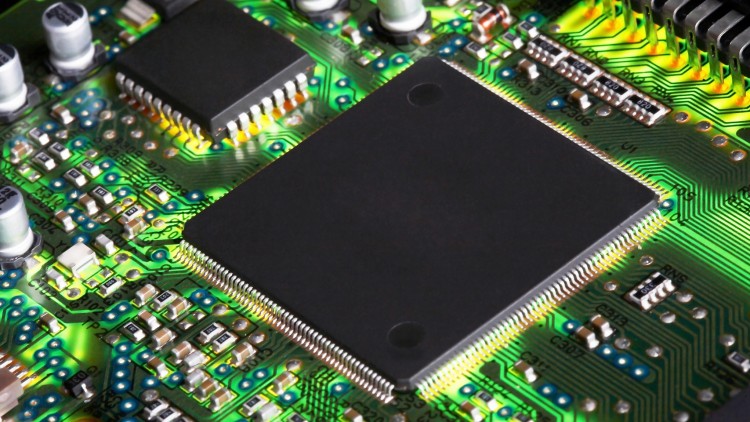Small potatoes: A closer look at chips

One of the issues with analysing the chip market, as with some others, is that the products are complex and have a huge array of applications. This often makes it difficult to compare one chip with another.
Moreover, some people might not know the difference between a micro-processor and a micro-controller, or what a semiconductor is… and where microchips fit into all this.
So here’s an attempt at an explanation.
The Lego theorem
Although micro-controllers and micro-processors essentially perform the same function – process electrical signals – and share many common features, they are different in one crucial way.
A micro-processors generally does not have random-access memory, or input-output pins except to be able to connect to other components.
A micro-controller, on the other hand, does have RAM, and I/O pins. This means it can actually be programmed as though it were tiny computer, albeit one with limited functionality. You cannot, generally speaking, program a microprocessor.
You could think of a micro-processor as a building block, like an individual Lego piece, which can be connected to other components to form a complete chip board, system or device.
A micro-controller is a self-contained processing unit which is designed for a specific task and is generally not expandable. Maybe you could think of a micro-controller as a small collection of building blocks which form a complete object which has a defined function – a Lego car made of many pieces, to continue our metaphor. However, a micro-controller can still interface with other components.
A micro-controller is sometimes referred to as a “system-on-a-chip”, or SoC, and is often used in such things as washing machines, computer keyboards and mice, to name just a few examples.
A micro-processor, having only an all-purpose central processing unit inside, simply number-crunches, and can do so in unison with a number of other components. As such, micro-processors are adaptable to many different applications, and are expandable to create large and complex systems.
Think what you could do with a whole bunch of individual Lego pieces – micro-processors – that you may not be able to do with a whole bunch of Lego cars – micro-controllers. Yeah, you could take the cars apart into their constituent parts and build things from those, but now you’re just being awkward.
The silicon matrix

A semiconductor is a material – usually made of silicon crystals – which conducts electrical signals. Silicon crystals are usually arranged in a grid-like pattern, where each silicon atom is bonded to bonded to four other silicon atoms.
Think of Lego pieces made of silicon, or have we graduated from that now? Lego is not actually made of silicon, of course, it is made of acrylonitrile butadiene styrene, a thermoplastic polymer comprised of three monomers.
A microchip, meanwhile, is often a sealed box inside which may contain microprocessors and microcontrollers. A microchip is sometimes described as a miniature circuit board. But microchips, microprocessors and microcontrollers can all be found on integrated circuit boards, which is a whole other board game.


